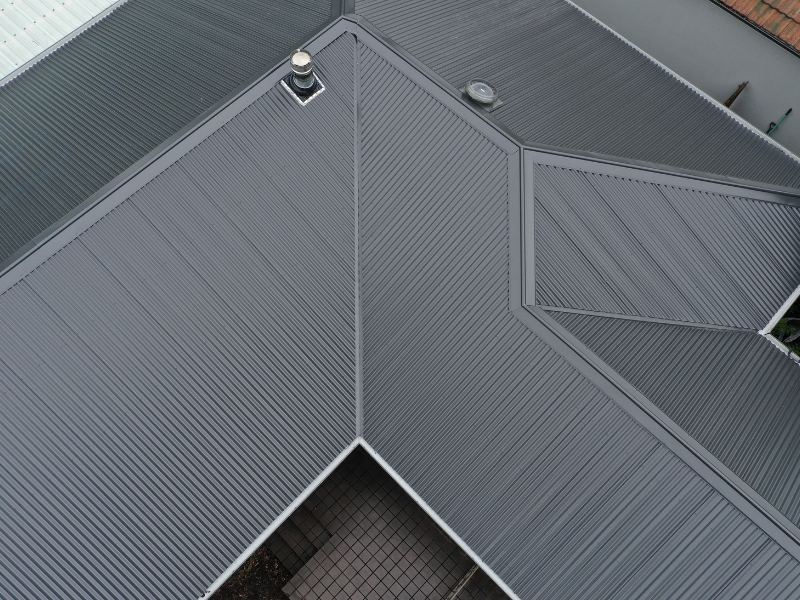When considering a metal roof installation, many homeowners and business owners have a common question: “Do I need a permit for metal roof installation?” The answer isn’t always straightforward. You may need a permit depending on your location, the scope of the project, and local building regulations. This article will walk you through when a permit is necessary, what can happen if you skip the permit, and how to navigate the process.
When do you need a permit for metal roof installation?
In most cases, the requirement for a permit depends on several factors. Here’s a breakdown of when you typically need a permit to install a metal roof:
- Structural changes
-
- New roof installations: If you’re replacing an existing roof, especially if you’re changing the structure (such as increasing the height or installing additional supports), you’ll likely need a permit.
- Roof extensions: Adding extra features to the roof, like extensions or dormers, will require approval.
- Location
-
- Council regulations: In areas like New South Wales, local councils have specific guidelines. Always check with your local council to confirm.
- Heritage areas: If your property is in a heritage-protected zone, additional restrictions may apply, requiring permits even for minor changes.
- Building code compliance: Metal roofs must meet specific building codes for structural integrity, wind resistance, and insulation. A permit ensures that the installation complies with these codes.
- Commercial properties: Permits are often mandatory for large commercial and industrial buildings, particularly if they are changing in size or usage.
Tip: Always consult your local council or a professional roofing contractor (like Scott’s Metal Roofing) to understand your area’s specific rules.
How to obtain a metal roof installation permit
The process of getting a permit for metal roof installation is relatively straightforward if you follow the right steps:
- Step 1: Check local building codes: Begin by contacting your local council or visiting their website to learn about the specific requirements for metal roofing in your area. Some councils even offer online tools to help you determine whether you need a permit.
- Step 2: Submit an application: Once you confirm the need for a permit, submit a formal application. This may include providing:
- Detailed plans of the existing and new roof (including dimensions and materials).
- Proof of insurance and contractor details (if applicable).
- Engineering reports showing the structural integrity of the roof design.
- Step 3: Pay fees: Some councils may charge a fee for permit applications, which varies based on the complexity and size of the project.
- Step 4: Wait for approval: After submitting your application, wait for approval. Depending on your area, approval could take a few days to several weeks.
- Step 5: Get started: Once the permit is approved, you can proceed with your metal roof installation. Be sure to keep the permit documentation on hand in case of any inspections.
Are there any special considerations for metal roof permits in specific areas?
Certain areas have unique requirements when it comes to installing metal roofs. Here are a few examples:
- Bushfire-prone areas (NSW): For properties located in bushfire-prone zones, additional considerations must be made to ensure the roof is fire-resistant. Metal roofs are often preferred due to their ability to withstand heat. However, you may still need a permit to confirm compliance with fire safety standards.
- Coastal regions: If your property is close to the coast, you may need to meet specific regulations designed to withstand salt corrosion. This may include special coatings or materials for your metal roof.
- Heritage listings: In some areas where many properties are heritage-listed, installing a metal roof may be subject to strict controls to maintain the area’s character. You may need to apply for heritage approval before obtaining your regular building permit.

Additionally, understanding the lifespan of a metal roof is crucial in these areas. Metal roofs are durable and long-lasting, but ensuring they are installed according to the local conditions can significantly impact their lifespan and the need for ongoing maintenance or permits.
Can you install a metal roof without a permit in certain circumstances?
In some cases, a permit might not be required to install a metal roof. Here are the most common scenarios where you might be able to install a metal roof without a permit:
- Repairs and maintenance: If you are simply replacing a damaged roof with the same material and making no structural changes, you might not need a permit. However, it’s always a good idea to double-check with local authorities.
- Residential properties: For minor roofing projects like fixing a small section or replacing tiles with the same type of material, a permit may not be required, depending on the local council’s rules.
- DIY projects: If you’re installing the roof yourself on a small residential building and no significant structural changes are needed, some councils may allow you to proceed without a permit. However, this varies widely, and professional help is always recommended for safety and compliance.
Reminder: Even if you think you don’t need a permit, always check with your local council or a trusted roofing expert to avoid surprises.
What are the key differences between metal roof installation with and without a permit?
Before proceeding with your metal roof installation, weighing the benefits of obtaining a permit is important. While skipping this step may seem like a shortcut, it can lead to long-term complications. Here’s a table comparing the key differences between metal roof installation with and without a permit:
Factor | With a Permit | Without a Permit |
Compliance with Building Codes | Fully compliant with local regulations | Risk of non-compliance with local codes |
Cost | Permit fee applies (varies by council) | Potential fines and penalties for non-compliance |
Time | Installation can begin once the permit is approved | Immediate start possible, but delays if caught |
Risk of Structural Issues | Risk of Structural Issues | Higher risk of structural issues, as no inspection occurs |
Insurance | Insurance coverage is intact | Risk of voiding insurance claims due to non-compliance |
Property Value | Adds value due to proper documentation | May reduce value due to unapproved work |
Long-Term Legal Issues | No legal repercussions, fully licenced work | Potential legal issues and expensive rectifications |
Inspection | Building inspections ensure quality work | No inspections, risking substandard work |
Skipping the permit process may seem easier, but the risks of non-compliance, insurance issues, and legal consequences can far outweigh the cost and time saved. For a smooth and worry-free experience, look for reliable metal roof installation services.
Conclusion: Is it worth the hassle?
In short, obtaining a permit for metal roof installation is often necessary to ensure the job meets all legal and safety requirements. While the process may seem like a hassle, it’s essential for ensuring the quality and durability of your roof—and can save you from costly penalties or issues down the track. If it’s time to replace your roof, discuss your roofing needs with the experts at Scott’s Metal Roofing.

